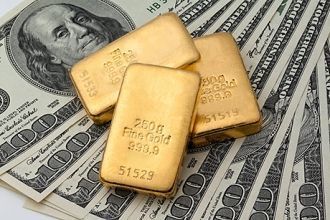USA
On March 14, 1900, Congress ratified the Gold Standard Act, which officially ended the use of silver as a standard of United Stares currency and established gold as the only standard. The New York Times reported that President William McKinley “used a new gold pen and holder” to sign the bill.
The gold standard is a system under which a country ties the value of its currency to gold, setting a fixed price at which gold can be bought or sold by the government. The United States had since its early history used both gold and silver to value its currency, a system known as bimetallism.
Under bimetallism, fluctuations in the value of gold and silver would cause one metal to be virtually removed from circulation for a time. A rise in the value of gold in the early 19th century made gold more valuable as a metal than as currency, prompting many Americans to have their gold coins melted down. As a result, the U.S. was virtually taken off the gold standard until 1834, when the government changed the gold-to-silver ration to about 16 to 1 from 15 to 1.
The use of silver currency declined following the California Gold Rush of the 1850s, which reduced the value of gold in relation to silver. The U.S. effectively ended its use of the silver standard in 1873 with the passage of the Fourth Coinage Act, under which the government would no longer produce silver dollars for domestic use or exchange silver at a fixed price.
The Coinage Act — along with the dropping of the silver standard by European countries — contributed to the Panic of 1873, an economic depression in the U.S. and Europe. The act reduced the money supply, causing a rise in interest rates and making it difficult for banks to raise capital or pay off debts. The act also hurt silver mining companies in the West, who called the act the “Crime of ’73.”
In the 1880s and ’90s, crop prices decreased, creating great hardship for farmers. Pro-silver advocates and Western populists argued for an increase in the money supply through the reintroduction of silver currency. The issue was at the center of the 1896 presidential election. The Democrats, who later split over the issue, nominated William Jennings Bryan, a populist, after his famous “cross of gold” speech at the convention. Bryan decried the gold standard, proclaiming, “You shall not crucify mankind upon a cross of gold.”
Eastern bankers who wanted to protect against inflation favored the gold standard. Running on a pro-gold standard platform, McKinley defeated Bryan, clearing the way for the passage of the Gold Standard Act more than three years later.
The United States remained on the gold standard until 1933, when President Franklin D. Roosevelt suspended it to combat the deflation of the Great Depression. The nation continued to exchange gold internationally at a fixed price until 1971, when President Richard Nixon ended the practice.
Connect to Today:
Today, no country uses the gold standard. However, there is rising support among Americans for its reintroduction in the hope of controlling inflation. The Republican presidential candidate Ron Paul has made the gold standard a central platform of his campaign, and fellow candidate Newt Gingrich has pledged to study the issue.
In November 2010, The Times’s Room for Debate blog asked whether moving to a modified gold standard makes sense in the modern global economic climate or if it would make recovery from recession more difficult.
What are the arguments for and against a return to the gold standard? Do you think it makes sense for the U.S. to connect its circulated currency to its gold reserve? Why or why not?
Ссылка на источник: http://learning.blogs.nytimes.com/2012/03/14/march-14-1900-u-s-officially-adopts-gold-standard/



 USA,
USA, 





